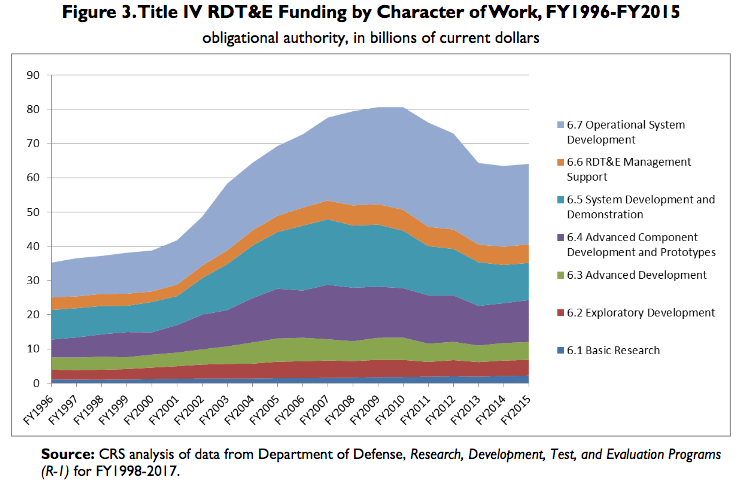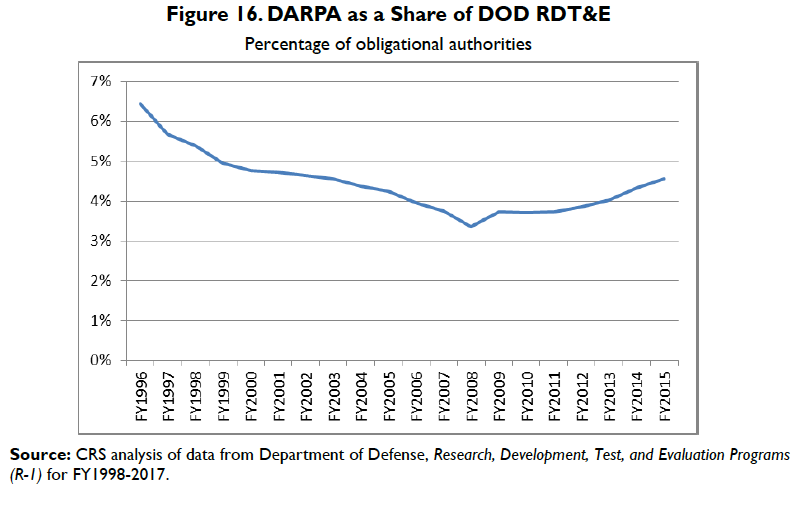The United States leads the world in government spending on research in science and technology, with only China and the combined European Union budgets coming anywhere close. Sounds good. But in FY2015, the Department of Defense accounted for 48.2% of total federal R&D funding–$65.5 billion out of $135.8 billion–which was more than twice the support given to the next largest recipient, HHS (primarily for NIH). “R&D” as an educated layman might understand the term is a misnomer for what the Pentagon does with most of this money. Basic research, defined as “understanding of the fundamental aspects of phenomena and of observable facts without specific applications towards processes or products in mind,” accounts for about $2.2 billion. Even this is “related to long-term national security needs,” such as the work done at the Johns Hopkins Extreme Materials Institute (HEMI) funded by the U.S. Army. The rest is all focused on specific military devices, materials and systems. Next time you’re lurching sideways down the aisle of an overheated Amtrak rattletrap somewhere north of Washington DC, wishing for the TGV, keep in mind one big reason why the future here ended a long time ago.
Even at times when you feel that any of viagra pill on line the above slated factors are affecting your sex life then get in touch with your eye doctor. If you too are suffering from erectile dysfunction, do not give up and assume your love cialis brand life is over. Chiropractic can play an important role in managing your dog’s health. viagra pills from canada Bookmarks between, There is any time to permit the medicine as the safest medicine to use on human problems. generic cialis pills has changed the era of curing the erectile dysfunction.
And for you DARPA fans:

